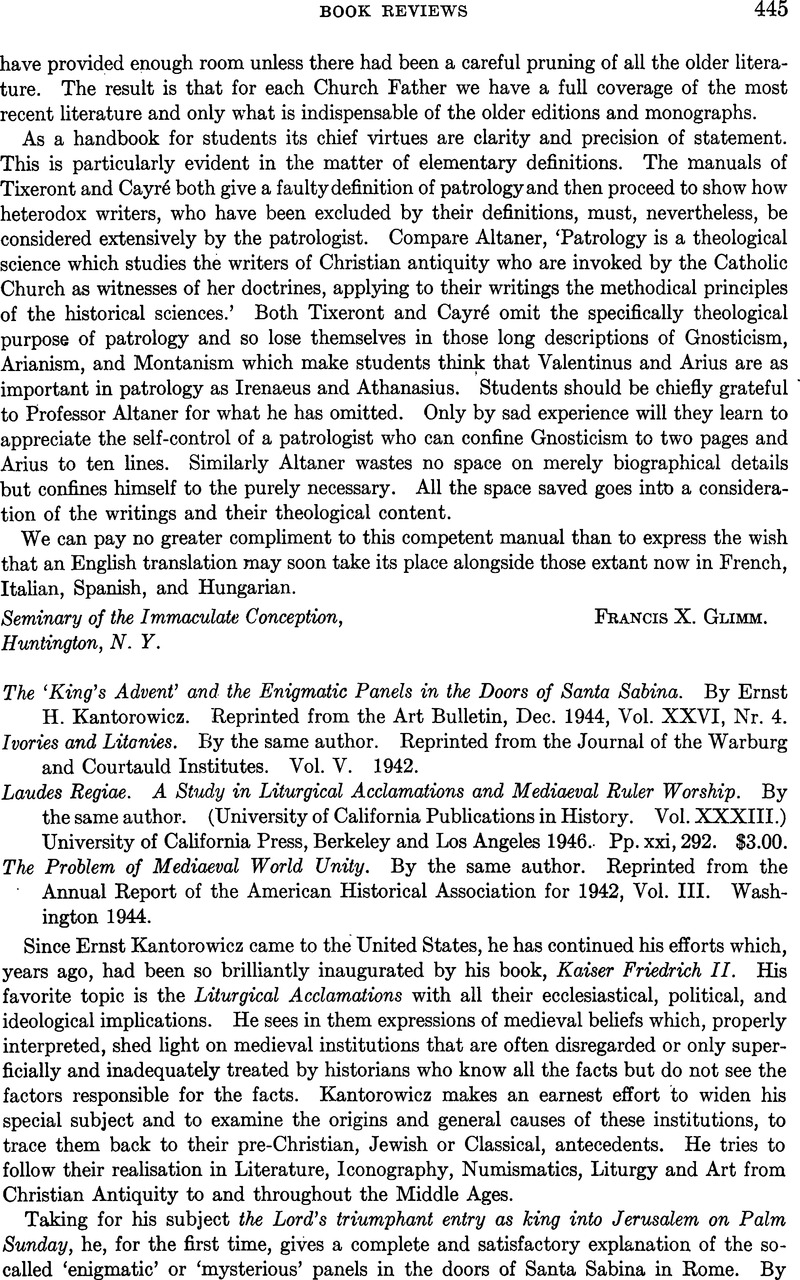No CrossRef data available.
Article contents
The ‘King's Advent’ and the Enigmatic Panels in the Doors of Santa Sabina. By Ernst H. Kantorowicz Reprinted from the Art Bulletin, Dec. 1944, Vol. XXVI, Nr. 4. - Ivories and Litanies. By the same author. Reprinted from the Journal of the Warburg and Courtauld Institutes. Vol. V. 1942. - Laudes Regiae. A Study in Liturgical Acclamations and Mediaeval Ruler Worship. By the same author. (University of California Publications in History. Vol. XXXIII.) University of California Press, Berkeley and Los Angeles 1946. Pp. xxi, 292. $3.00. - The Problem of Mediaeval World Unity. By the same author. Reprinted from the Annual Report of the American Historical Association for 1942, Vol. III. Washington 1944.
Published online by Cambridge University Press: 17 July 2017
Abstract

- Type
- Book Reviews
- Information
- Copyright
- Copyright © 1946 by Cosmopolitan Science & Art Service Co., Inc.
References
1 Chapter VII deserves a special citation because it gives the reasons for the revival of the Laudes in our days. It is certainly of some importance when an eminent scholar who is not a member of the Catholic Church, describes the Reform of Gregorian Music as part of the ‘Liturgical Movement’ by saying of this movement: ‘The latter's far-flung aims are not easily described, but it is not an exaggeration to maintain that the truly vital forces within the Roman Church have been gathered in this movement. It does not intend to purge only the liturgy of its baroque accretions and deformations and to revive the old, but it endeavors also to revive an unbroken and unreflected approach to liturgy in general and thereby affects, to an extent that cannot yet be gauged, the attitude toward religious life of millions of people. Important though this movement may be for its own values, it is important to the historian for the fact that it discloses and reflects a general European development of mind which is not confined to the Roman Church.’ Google Scholar




